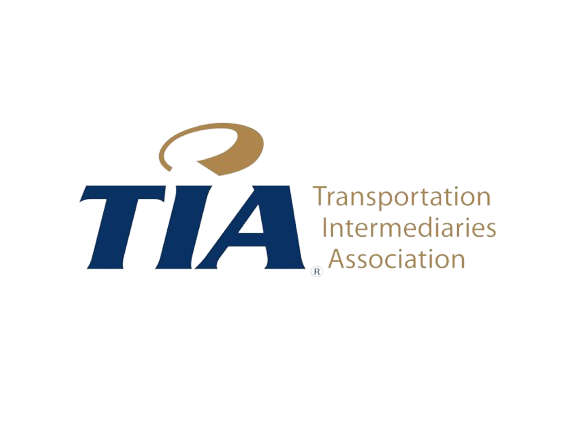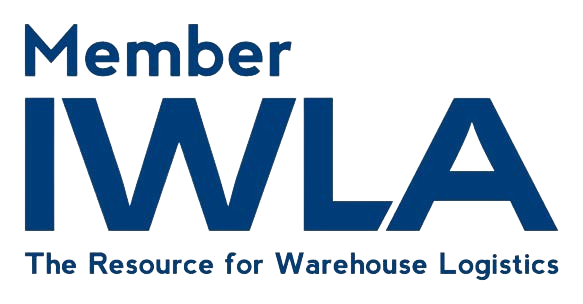How Do Warehouse Operations Work?
Warehouse operations and transportation take effort to manage. Different procedures and strategies can potentially influence production, costs, efficiency, compliance, accuracy and data collection. To stay ahead of these concerns and enhance the functionality of your warehouse distribution, it’s important to learn about the various elements you can practice to strengthen sustainability and capacity.
Jump to Section
Warehouse and distribution center best practices provide a structure that can lead to success. Implementing these practices in your system can help you reach your goals, whether you’re aiming for reduced costs or labor, increased productivity and efficiency, organization, data and information accuracy, or regulated transportation.
Warehouse and Distribution Center Management Best Practices
Efficient warehouse operations are crucial for optimizing distribution strategy and organization. With improved efficiency, you may see an increase in productivity and a reduction in costs. Here are some of the most efficient warehouse best practices you can implement in your management.
1. Regulate Vendor Compliance
Vendor compliance programs may be crucial for collaborating and communicating about products and requirements. Warehouse distribution centers can enable a working relationship between suppliers and vendors to enhance efficiency and improve internal facility operations. Vendor compliance programs may help the supply chain process by:
- Streamlining warehouse operations
- Reducing handling of products
- Improving transportation services
- Checking that purchase orders are in compliance
- Ensuring seamless movement
- Providing visibility
- Leading the way to increased customer satisfaction
A vendor compliance manager can handle and oversee these processes. Compliance managers are also responsible for monitoring all requirements and performance. With a manager in place, any concerns, issues or feedback with products or merchandise can be properly communicated to the vendor to reach a solution. Vendor compliance programs may also ensure suppliers provide sufficient information regarding standard case quantities, accurate bar code labels and advanced shipping notifications.
Observing the process of labels helps organize and optimize the warehouse distribution process. These processes may help identify any issues with non-compliance, which can produce ways of fixing the supply chain to enhance strategic relationships. Non-compliant shipments from a warehouse may cause a retailer to issue deductions or fees from a vendor.
Making specific changes without authorization can incur additional expenses that cause issues for your company. Minor improvements over a period of time that satisfy business rules and requirements can lead to overall efficient and productive operations that make a difference. Using your business guidelines, history, goals and customer service standards may help internal and external cost reductions as they comply with terms and conditions.
2. Employ Advanced Shipment Notifications
Advanced shipping notifications (ASN) can go hand in hand with vendor compliance. These notifications allow suppliers to see consistent status updates about when their product has been shipped from the warehouse and when it’s expected to arrive.
This information exchange is typically done with electronic data, which is part of an overall warehouse management system. With these notifications, you can improve efficiency by reducing delays or disruptions in the supply chain process.
Engaging a third-party logistics (3PL) company, such as Crown LSP Group, can help protect your investment in these kinds of practices. Upholding orderly communication among carriers and receivers is essential for scheduling receipts and prioritizing actions.
When receivers are notified of when to expect an incoming shipment, they will be better equipped to direct that product to the proper place. ASN also helps with management functions such as adequate staffing and receiving information about when shipment orders or inventory requirements are fulfilled. When transportation and labor are appropriately distributed and optimized, you can then begin to reduce the overall cost of operations.
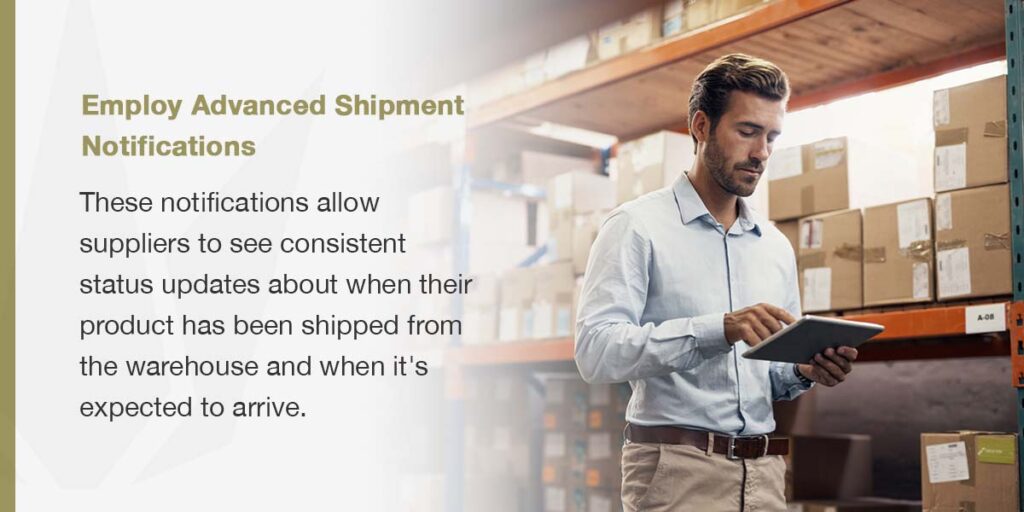
Some issues and questions that ASN can help resolve among vendors, retailers, businesses, suppliers and receivers include:
- Notifying what orders have been shipped
- Describing the items that are being shipped and their quantities
- Notifying when the order is expected to arrive
- Detailing if the shipment contains the complete order
- Notifying if the load is packaged with bar codes
- Listing the shipment or package tracking numbers
Many modern sellers may not even accept certain packages or shipments without an ASN, so you should implement this practice to help maintain accuracy and consistency. If someone identifies any error after a shipment label is scanned, you can immediately notify the supplier and quickly resolve the issue.
ASN can also provide efficiency with outbound transportation once the warehouse team is notified of incoming shipments. This procedure can help save time and reduce the likelihood of human error causing issues with sorting, unexpected delays and missing inventory.
3. Implement Automatic Data Collection
Automatic data collection, such as using bar codes, is more efficient than using manual processing. This implementation helps lower labor costs because most of the work can be done with technology.
You can also use radio frequency identification (RFID) tags to help with this process, as they help prevent human errors in counting or data information. In this instance, utilizing a company like Crown LSP Group lets you focus on what you do best with the help of flexible and scalable automated solutions.
Removing the need to handwrite long tracking or shipment numbers significantly advances your tracking process, increasing order visibility. In warehouse distribution, tasks or steps you can replace with technology make it easier for management because they will have fewer trivial things to focus on. Utilizing automated data collection technology gives you more time to focus on making decisions and streamlining your turnaround process.
Additional examples of ways that automatic data collection can help improve productivity in your warehouse can include:
- Providing shipping and label bar codes
- Boosting efficiency with handheld devices such as smartphones and tablets
- Giving you control over inventory loss
- Enhancing management and count of inventory
- Improving data accuracy and analysis
- Providing access to lot tracking and expiration dates
- Establishing software to help with order management and production consumption
Implementing automatic data collection can help your warehouse benefit from these services, letting you meet business goals and customer demands. It may be helpful to evaluate your warehouse to identify areas that automation technology can improve. When establishing automation processes, check your existing records to ensure information accuracy, which helps you anticipate challenges or difficulties if you are new to the process.
Once you can verify that there are no outstanding maintenance issues, you can expect increased productivity and, therefore, increased sales.
4. Minimize Touches
By utilizing automation technology, you can also reduce touchpoints in your distribution strategy. Minimizing manual touches in your warehouse can affect almost all elements of distribution processes. This can include eliminating packing stations and replacing them with automated ones or implementing print-and-apply technology for labeling processes. An order fulfillment company like Crown LSP Group can help minimize employee touches and improve pick-and-pack operations by reducing unnecessary steps for orders to go through.
For example, picking to a shipping carton rather than a bin or tote would be much faster and may lead to improvement in overall systems and cost reduction. Essentially, every time a product or shipment is touched, it creates room for more expenses, errors and time delays. When innovation is disrupted, it can lead to obstacles that hinder acceleration.
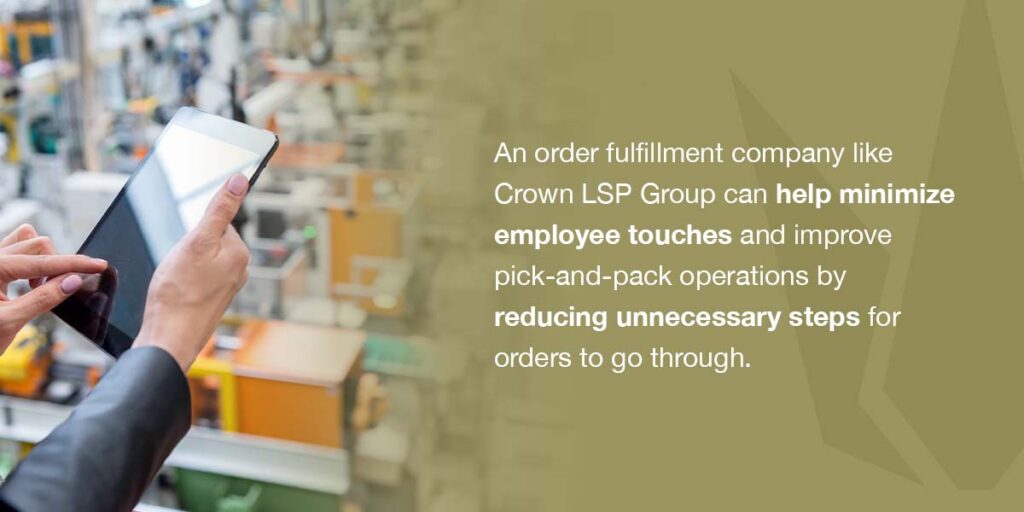
Some other ways that minimizing these physical touch aspects can improve your warehouse operations include:
- Minimizing operational costs
- Reducing the likelihood of errors and time delays
- Improving storage capacity
- Streamlining process handling and internal procedures
- Meeting higher demand
- Processing faster deliveries
- Maximizing profit margins
- Gaining a competitive advantage
Regulation requirements for many industries are rapidly growing and changing, so you can further benefit from these advantages by staying ahead of the game. While changing your traditional distribution model or system may seem challenging, staying up to date to deliver a reliable flow is important for your business’s efficiency and success.
Being proactive is an essential strategy in any business or industry, so it’s worth taking the time to locate where you can reduce costs and generate improvements. Minimizing product touches can also allow you to minimize waste and allocate the extra time, energy and labor to more important processes that cannot be automated. This may be very helpful for the efficiency of your warehouse operations.
5. Engage in Cross-Docking
Cross-docking is a method that can help improve order fulfillment and enhance competitive advantages in many ways. Cross-docking involves taking incoming delivery shipments or products directly to outbound transportation vehicles.
This practice helps with overall quicker processing for high-volume shipments by speeding up the flow of goods between distribution centers and consumers or store locations. There are several kinds of cross-docking, including manufacturing distribution, transportation, retail and other types that can satisfy vendor and customer needs.
This procedure has many benefits that help your warehouse operations run smoothly, such as reducing:
- Material handling
- Production to consumer turnaround time
- Shipment delays and costs
- Inventory management risks
- Packaging and labor costs
- Holding and storage costs
All of these advantages benefit your warehouse and optimize your supply chain by increasing customer satisfaction and lowering overall costs. Cross-docking terminals let your business consolidate packages and deliver them to one destination without additional hassle and excessive transfers or storage. Moving goods from one delivery truck to another can help maximize productivity and ensure your time and money are being used wisely.
When administering the practice of cross-docking, it’s essential to maintain inventory control processes to stay on top of accountability and invoices.
6. Record Movement as a Transaction
All steps and movements within the warehouse process should be recorded as transactions to help determine which procedures are necessary and which are not. This action commonly relates to inventory transfers — when stock or shipments are moved between warehouses — but it can also refer to good issues and receipts. This method may help eliminate certain steps that take up time or money that can be improved or altered to contribute to efficiency.
In warehouse distribution, these steps or movements that should not be part of the operation are known as turnbacks, which typically need to be reported to help enhance optimization.
Removing certain components such as damaged goods and issuing returns and transfers must be recorded in a stock account to help maintain count and transaction information. Continuously recording these movements as a transaction can help improve operations when products and assets are continually scanned to maintain the integrity of your inventory data.
This process may also help prevent any disruptions or deviations in the management system and identify solutions. Inventory transfer documents and movement transactions should also contain information on:
- Inventory postings and offsets
- Pricing and purchasing analysis reports
- Materials that are moved from one storage type to another
- Customer consignment
- Invoices for needed items and quantities
- Bin locations
- Transfer request status updates
Recording all steps in the distribution process can help in many additional ways, such as making it easier for you to determine when to reorder as well as improving accountability. Having all information documented improves the inventory process and reduces human error during the movement of materials. The retrieving process is also streamlined because, with fewer inconsistencies, there will be more time to properly control and track essential warehouse procedures.
7. Utilize a Warehouse Management System
A warehouse management system (WMS) provides a framework for keeping all functions and operations organized and in line with compliance regulations. Your WMS can be tailored to fit your business’s specific needs and requirements, especially with logistics services like Crown LSP Group, making it easier for you to customize solutions to your specifications along with any updated changes or regulations.
This flexibility positively impacts warehouse procedures that need to be simplified while showing what processes can benefit from automation. A WMS can help you increase visibility and monitor aspects that may lead to inefficiencies, such as:
- Overproduction
- Defective or damaged goods
- Excess inventory
- Overprocessing
- Time delays
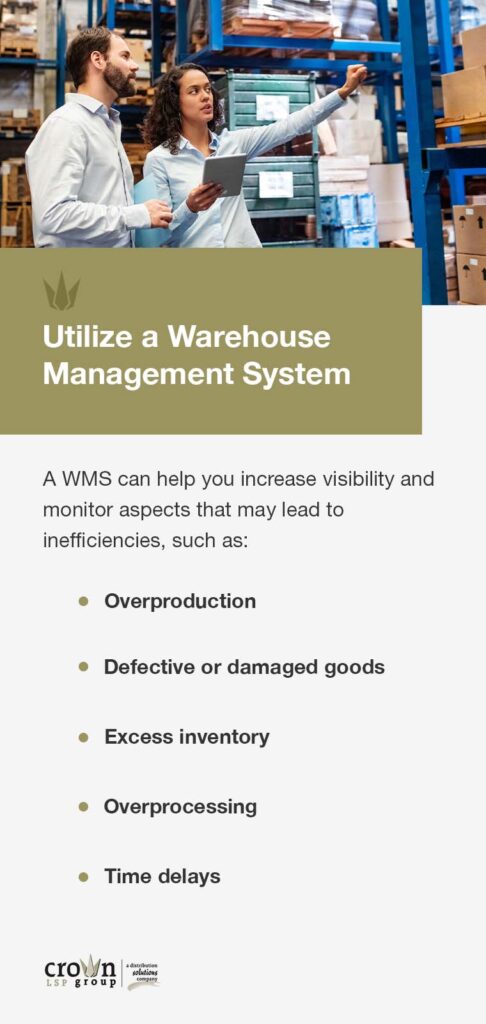
When these issues, along with many others, are more closely monitored and observed, it may create more room for components that actually add value to the supply chain. Using a WMS, you can more easily eliminate challenges that interrupt your order processing time by reducing any unnecessary transportation or movement that doesn’t contribute to productivity.
Having this system in place can optimize overall warehouse performance by:
- Increasing distribution center efficiency
- Identifying and reducing risks
- Organizing execution processes and systems
- Integrating workflows that meet demands
For manufacturers looking to use 3PL distribution centers, companies like Crown LSP Group help you structure these practices into your warehouse. Using an experienced company to generate your WMS helps your business set new standards and reduce diversions in your packing or transportation process. A WMS will help ensure you consider all critical success factors and that key elements are configured to fit your existing approach.
Before implementing a WMS, it’s important to address any possible concerns or challenges with your vendors and associates so you’re better prepared to adjust to the new change.
8. Evaluate Requirements
Regularly evaluating certain practices in your warehouse or distribution center is essential for effective adaptation. Being aware of requirements for your customers and operations provides an excellent opportunity for growth once you recognize the areas that need improvement. After planning, designing and employing effective operations, regularly check in on them to see how needs and demands have changed. Customer requirements tend to change frequently, so evaluating them often can help you stay on the path to achieving the results you wish to see.
Some additional ways that can help you evaluate customer and industry requirements are:
- Verify quality and validation criteria
- Consider significant supporting processes
- Keep up with market conditions
- Understand your accessibility, space and workflow
- Monitor regularly to make corrections
- Integrate traceability
- Estimate consequences with change effect analysis
Warehouse and distribution centers may need to consistently adapt to environmental or internal changes, which can relate to the goods themselves or the inventory layouts. In any business, it’s always a good idea to review system processes and performance to see how they measure up to expectations and if you can alter them for efficiency. Practice this method by generating a consistent evaluation schedule that will allow you to get a better look at what strategies are working best.
Contact Crown LSP Group for Warehousing Services and Transportation Requests
Crown LSP Group is a distribution and third-party logistics company that offers flexible and scalable services for your warehousing and transportation needs. We strive to provide you and your business with operational efficiency, cost-savings and value-added services to address your concerns and improve productivity. Our experience will give you the quality you deserve and allow you more time to focus on manufacturing and selling products.
Our services act as an extension of your business so you can move materials or products at a lower cost and increase your profitability. At Crown LSP Group, we understand that your needs are unique, so we are proud to adjust our capabilities to find new, customizable ways that benefit you.
Contact us to learn more about the warehouse logistics services we provide or visit our website to request a quote today.




